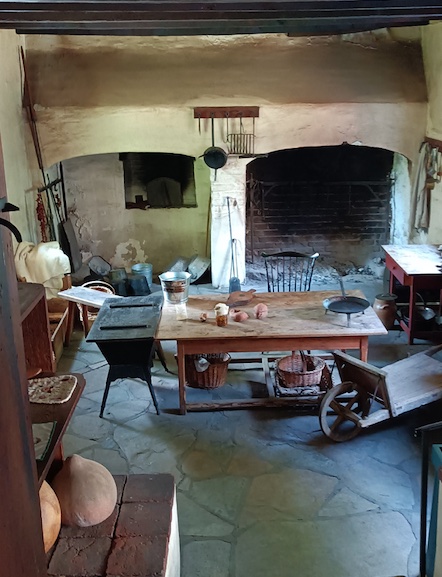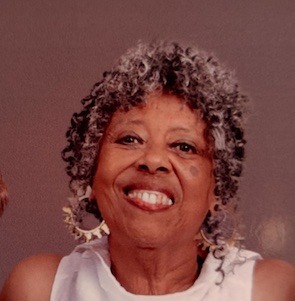
7 minute read
Hunting History In Winston-Salem: Part 2

Renée S. Gordon Travel and History Writer
“In essentials, unity; in nonessentials, liberty; and in all things, love.”
–Moravian Motto
Winston-Salem, one of the oldest cities in the state, is actually two cites, the oldest, Salem, dates from 1752. The Moravians, a protestant sect that originated in what is now the Czech Republic, originally settled in Pennsylvania but eventually a group moved to 100,000-acres in North Carolina and named their colony Wachovia, the land of streams and rivers. In 1766, Salem was chosen as the administration center site.
Salem has been a destination since its founding as a congregational town in 1766. The village had the first public waterworks in the country by 1788 and 3-years later George Washington visited to see it and spent 2 nights in the Tavern. In 1849 land was sold by Salem to establish Winston but it was not until 1913 that the two towns officially incorporated. VisitWinstonSalem.com

Interestingly, some of the greatest innovations the area has to offer are to be found in historic Old Salem dating from 1760-1850s. The district has more original historic structures than Williamsburg and eight restored gardens surrounded by historic fencing styles.

The Heritage Bridge visually and physically connects modern Salem with Old Salem Historic District. Fishcetti designed this 1999 replica of an 1800s frame bridge. As you walk the 120ft. bridge you can almost feel the centuries slide away and then you step out into the Moravian world, as it existed between 1766 and 1840. www.oldsalem. com
Old Salem Museums & Gardens preserves more than 70 structures and is an important and well-regarded living history site. The Old Salem Visitor Center was constructed in 2003 and provides an orientation to Old Salem through an introductory video and themed exhibitions. Housed in the James Gray Auditorium is a Pennsylvania, restored, 1800 David Tannenberg Organ.
The country’s largest collection of southern furniture and decorative arts is situated adjacent to the visitor center in the Museum of Early Southern Decorative Arts (MESDA). African American crafts and craftsmen are prominently represented throughout. Three of the most renowned artists whose works are included are Joshua Johnson, David Drake the Potter and Thomas Day. In the late-1700s Johnson was the first African American portraitist in the country.
Only one of his portraits was signed. Dave the potter was born in 1801 and was taught to read and write by his owner. He included original poems on some of his works and he signed some of his pieces. In his 30s he lost a leg and could no longer operate the treadle on the pottery wheel. The slaveowner paired him with another slave who had crippled hands but could work the treadle. During the Civil War his owner had him make pots to hide his fortune. mesda.org
African Americans were always an integral part of Salem. They made the bricks, helped construct the structures and were artisans, craftsmen, tradesmen woven into the settlement’s fabric. The majority of the enslaved were bilingual, speaking both German and English, and were called upon to serve as translators.

Four years after Salem was established records reveal that Africans and African Americans were approximately 20% of the population.
Attitudes towards the enslaved changed in the 1800s and in 1822 blacks organized their own church funded by the Female Missionary Society of the Moravian Church.
The “Negro Church” was made of logs and stood 32-ft. by 28-ft. The Missionary Society established a school there in 1827 that operated until teaching African Americans to read became illegal. The congregation outgrew the church and in 1861 built a new one. The church became a Freedman’s Hospital after the Civil War. In 1999 it was reconstructed on its original.
In 1861, the congregation constructed a Greek revival brick church. Union Chaplain, Reverend Clark, read the Emancipation Proclamation from the pulpit on May 21, 1965. In 1914 the church was officially named St. Philip’s Moravian Church in reaction to its being known as the slave church. stphilipsmoravian. org
Moravians were originally buried together in God’s Acre (1766) by choir, or gender group and non-Moravians were buried in the Stranger’s Graveyard. The first black burial was Catarina (Sukey) in 1799 and the final one was in 1813. In 1816, it was determined that burials should be segregated and “Negro God’s Acre” was established at the opposite end of town
In the 1990s, efforts were made to locate and identify the gravesites. Excavations determined there are more than 100 graves. One elderly woman recalled hearing that there were gravestones beneath the church steps, acting on this information they recovered 12 gravestones.
The village was laid out in a grid pattern with a main square flanked by a street on a north-south axis. At one end of the town a tavern for use by “outsiders” was erected in 1784. No windows were built in the side that faced the village. It now functions as the Tavern Museum and reflects the experience of a person lodging there. It is believed to be haunted and is one of two National Historic Landmarks in Old Salem.
The 1769 Single Brothers’ House, the second landmark, housed the unmarried brethren.

Winkler Bakery has one of the oldest operating dome ovens in the nation and is wood heated.
This functioning bakery sells both Moravian cookies and their famous sugar cake. Mrs. Hunters’ Moravian Cookies are hand-rolled, hand-cut and hand-packed at the rate of more than 10-million annually. Oprah Winfrey listed them as one of her favorite things. For more information visit https://anescookies. com
In the 1930s Vernon Rudolph began making doughnuts in a rental property in Old Salem. The secret recipe was purchased from a chef in New Orleans and went on to become known as Krispy Kreme doughnuts.

Richard Joshua Reynolds founded a tobacco company in Winston-Salem and established one of the world’s largest tobacco firms in 1874. In 1912 40 dependencies on their 1,067-acre formed a model farm estate. The residence, Reynolda House, is considered one of the last and best-preserved examples of American Country House architecture. The 64-room, interior is filled with the best American craftsmanship of the era with metalwork by Caldwell
& Company and furniture ordered from Wanamaker Department Store’s. The original furnishings have survived and are largely Italian Renaissance and English Tudor. A 2,566 pipe Aeolian organ, one of only 899 made, is situated in the two-story Reception Hall and is played daily. The house has four levels in the center with two additional wings. Ironically, Reynolds, responsible for the first successful packaged cigarettes, did not smoke cigarettes or cigars.
Reynolda House Museum of American Art exhibits the best collection of American Art in the Southeast United States. Tours are self-guided and audio guides are available. Continue your visit in Reynolda Gardens, a fine example of the American Garden Movement. reynoldahouse.org

Maya Angelou was a resident of Winston-Salem and both her 75th birthday party and her funeral repast were hosted by Oprah Winfrey and held at the Graylyn Estate. World class cuisine and 85 accommodations are on offer there. Find more information at https://graylyn.com










